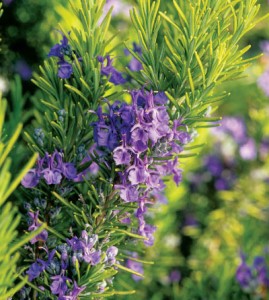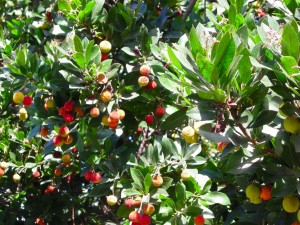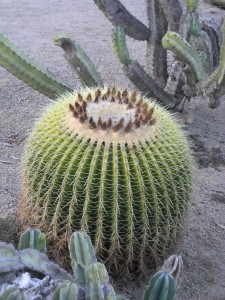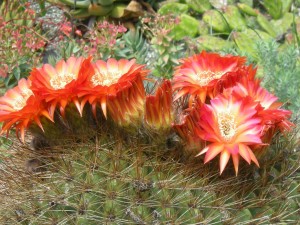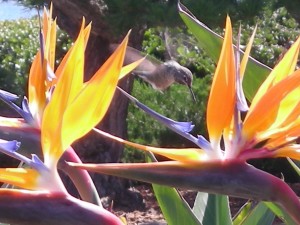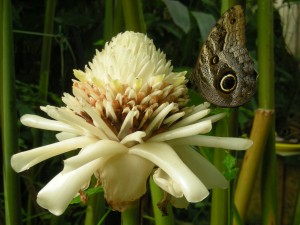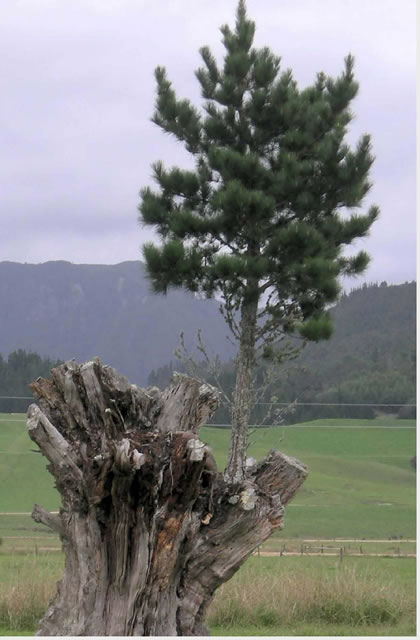news topics
-
share this site
ecology & environment
economy
life
follow me
grow your own
tiny kitchen gardens and small scale food production in planters are gaining increasing popularity, which spurs on a variety of inventions in and around planting tools and methods.
I have patented my own planting system (a huge improvement in keeping plants healthy and alive!) and designed an entire plant pot series for in- and outdoor use around it.
my conviction and resolve to only consider producing on demand, in a fully sustainable manner and with natural and recyclable materials has not allowed me to find a manufacturer so far.
I found quiet a few potential buyers/customer (commercial nurseries in Europe and the USA) and lots of clients and friends supporting the idea… but attempting a similar approach like Ritta and friends might really be a good idea!
contact me to know more and to collaborate!
here the link to Ritta’s ted-talk
http://www.ted.com/talks/britta_riley_a_garden_in_my_apartment.html
Posted in diversicum
Leave a comment
Tom DeBaggio
unless you are a plant lover, especially herbs such as rosemary, lavender and basil, you might not have heard of this great herb grower and man.
he died early this year, aged 69. In 1999, he was diagnosed with early onset of Alzheimer’s disease, he was only 57 then.
he was once called the best “rosemaryologist” in the US. he dedicated a gold-edged leave variety to his wife, Joyce DeBaggio, but he could suddenly not remember the name of the plant he grew so successfully and loved the most.
he has written books on his love and knowledge of plants: “Growing herbs from seed, cutting and root”, “Basil, an herb lover’s guide” and with Arthur Tucker “The big book of Herbs”.
but he also wrote incredibly touching and educational books on his disease: “Loosing my mind – an Intimate look at life with Alzheimer’s” and “When it get’s dark”.
I recently read “Loosing my mind” where he goes back and forth between his past memories, the painful present and add lots of information on the disease and medical research.
quote
The diagnosis, with little or no workable therapies to stop it, was a sentence of death as surely as birth, but more immediate.
I am running after thoughts all day. Ideas evaporate like snowflakes on a hot tin roof. A few years ago I felt as normal and was as sharp mentally as my thirty-five year old son. Now, I can’t remember his age or do the math in my head to figure it out. My mind is starting to break down. I have to wait like a hunter to capture a thought, it is tough work all day but it often flits away before I can put it on paper.
I want to cry and I do, but it is a peculiar sound, like a man choking to death. I want to scream but it won’t come. Where did my voice go?
As I sit in the waiting room for the doctor, I realize I am here at the edge of failure and of hope.
I have grown plants, herbs, and vegetables mostly, since I was six and for the last twenty –five years commercially. As a job, this activity allowed me a close look at the life and death of other species.
My prolonged contact with plant life has provided me with an insight on the similar life and death of my own.
We scream louder.
unquote
Posted in diversicum, english blog
Leave a comment
carrot city
in continuation on the subject of community gardens and small scale food production, “gardendesignonline.com” just published the following book review :
“”This book definitely has it all: edible walls, rooftop gardens, imaginative containers, veg gardening in window boxes, hydroponic systems, small back yards and community gardens.
In Carrot City: Creating Places for Urban Agriculture (Monacelli Press, 2011), authors Mark Gorgolewski, June Komisar and Joe Nasr clearly demonstrate that you don’t have to go way outside the city to grow and/or find excellent local produce.
It’s likely the most comprehensive survey to date of the “locavore movement” that’s persuading chefs, educators, designers and homeowners that there are benefits to growing food close to home — it promotes good health and also reduces the carbon footprint.
The book features ongoing projects that are visually striking and that promote the concept of “everyday urban agriculture.”
As the authors put it, “For urban agriculture to gain wide acceptance and generate enthusiasm, the design of buildings and the garden spaces around them that incorporate edible landscaping and space for small livestock must be aesthetically pleasing.”
Designers, they argue, “are uniquely positioned to make a difference.”
What’s truly exciting is the idea that blighted urban areas can be transformed into productive and attractive sites.
You’ll be convinced when you read about the Curtis “50 Cent” Jackson Community Garden in the borough of Queens in New York or the Edible Schoolyard in Brooklyn.
The Carrot Green Roof in Toronto includes space for community activities as well as vegetable and herb gardens, rainwater harvesting and composting systems, and a community kitchen where cooking demonstrations are held.
Atop the Gary Corner Youth Center on Chicago’s South Side, there an 8000+ square foot green roof where education and food production go hand in hand.
At the back of the book, there’s a how-to section illustrating some of the techniques and systems you might want to consider for urban agriculture.
When you see the “plans” for redesigning the urban home, for entire urban communities that are self-supporting, you’ll want to get on board as well.”"
Posted in diversicum, english blog
Leave a comment
edible & ornamental
It’s been a rather eventful summer, politically, economically (no surprise there, though) and personally (my sister’s first visit in Singapore and her second in 22 years living in Asia).
I have again read very interesting and disturbing books… “When the rivers run dry – water, the defining crisis of the 21st century” by Fred Pearce (the author of “Confessions of an eco-sinner” and “The last Generation” amongst others) and “annoying – the science of what bugs us” – a greatly enlightening read about my own irritability…so much for bio-chemical reactions…
I am truly happy to see that so many neighborhood gardens spring up all over the Island, in housing estates, in between built up areas and in our little corner of Singapore, every available space on the sidewalks is converted into ornamental and, to my great pleasure, edible kitchen gardens!
People start producing their own food, from planting simple herbs to smaller fruit trees and vegetable vines, this truly is fantastic to see – whether the reason are the steadily increasing food prices or simply the joy of seeing plants grow, tending to them and harvesting their own fruits of love and labour, is unsubstantial.
Working the soil, turning non-descript walkways and front yards into blooming, colorful and productive spaces is a truly positive development!
A movement all over the world which has clearly caught on here, too!
Posted in diversicum
Leave a comment
enlightened & entertaining statistics
if you have never seen Hans Roesling in action, watch and listen to some of his TED speeches – he makes data exceptional fun; actually almost magical!
he is an incredibly informative, captivating and entertaining statistician – and a wonderful man!
http://www.ted.com/talks/hans_rosling_and_the_magic_washing_machine.html
http://www.ted.com/talks/hans_rosling_asia_s_rise_how_and_when.html
http://www.ted.com/talks/hans_rosling_the_good_news_of_the_decade.html
Posted in diversicum
Leave a comment
?diversity?
when Matthias and I traveled around the world, almost 30 years ago – about the same time National Geographic predicted that we are heading into the next Ice Age –we were still able to discover and experience distinct, authentic and unique cultures and traditions in the continents and the many countries we visited.
it was incredibly interesting, beautiful, fascinating and immensely enriching!
now, our god children and nephews are in their early twenties and do on occasion travel to far away, “exotic” places.
and what do they find, starting right at the airports, which more often than not resemble shopping malls with air access?
well, mostly, the b… same things they find right at home…
Starbucks, Gaps, McDonalds and lots of other boringly predictable branded stuff
if they are really adventurous, they can try local food… at least this either remained or underwent recent revival, thanks to all the food channels and programs on TV worldwide.
The “Americanization” of planet earth, the stripping and destruction of individual ethnicity and culture, traditions and values and “replacing” it with ? what really ? is really tragic!
I believe these “values”- especially economically (the shortest path to profit) are at the source of all our problems: the corruption of capitalism and the subsequent destruction of habitat, communities and biodiversity.
I welcome your comments and input – but even more helpful and interesting would be any suggestions of how to counteract and, at best , reverse these effects.
thank you and have a happy weekend!
Posted in diversicum, personal
Leave a comment
Time to End War on Earth
I believe that my own writing cannot measure up to convey my core believes, thinking and message any better than the people I will feature on my site.
I start the series with a woman I admire from the bottom of my heart: Dr Vandana Shiva (learn more about her here: http://www.vandanashiva.org/
below are excerpts (edited) of her Sydney Peace Prize Talk, in November 2010 – to listen to the entire speech : Vandana Shiva : Sydney Peace Prize Talk from WisdomKeepers Productions on Vimeo.
Dr Vandana Shiva’s Sydney Peace Prize Lecture: Time to End War on Earth
“The blindness of mechanical reductionist thought is constantly projecting as abundance systems that are creating scarcity! And nowhere is this more evident than in agriculture, where agriculture has become, literally, an everyday war against species, against farmers, against the land and even against those who eat by assaulting our bodies.
There are three levels of violence involved in non-sustainable development: 1. the violence against the earth = the ecological crisis; 2. the violence against people = poverty, destitution and displacement; 3. the violence of war and conflict = exploitation of resources (commodities and human) by the powerful.
The elevation of the market and money (man-made capital) to the pole position of the organizing principles for societies and the only measure of sucess and well-being has led to the decay and destruction of the processes that maintain and sustain life in nature and society.
The “richer” we get, the poorer we become ecologically and culturally. The growth of affluence, measured in money, is leading to a exponential growth in poverty at the material, cultural, ecological and spiritual levels.
The real currency of life is life itself and we need to ask ourselves whether we are mere money-making, resource-guzzling machines or the custodians and caretakers of an entire ecological system. Do we have a higher purpose?
I believe that ”earth democracy” enables us to envision and create living democracies based on the intrinsic worth of all species, all peoples, all cultures – a just and equal sharing of this earth’s vital resources, and sharing the decisions about the use of the earth’s resources.
Making peace with the earth was always an ethical and ecological imperative. It has now become a survival imperative for our species.”
I hope that many more of you will start questioning how we conduct our lives – and consciously change the way you do live – and through these actions contribute and hopefully ensure that future generations have a life worth living and enjoying.
Posted in diversicum
Leave a comment
the green corridor – an unreasonable approach
last night’s meeting of the local chapter of “The Green Drinks” prompts this post and two simple requests:
firstly, asking for your support for the NSS petition to the Government for the future use of the railway land and
secondly, discover the unreasonable being inside of you and set it free!
captured your interest now? then let me explain:
we listened to a brief presentation by Nature Society of Singapore on the KMT Train tracks connecting Singapore to Malyasia, from Tanjung Pagar Station right up to Woodlands, including the Jurong sidetrack.
this “Green Corridor” - a beautiful, natural spine with it’s own incredible biodiversity (including community gardens!) – through this concrete- and glass-city -jungle, is in dire need of protection as the train service will end in June 2011 and revert into state land.
the greenery is too narrow to be converted into the usual condos and malls and Nature Society is now looking for great ideas to make use of the 40 km long tracks, an area as large as the Botanical Gardens!
Singapore is a thoroughly structured, planned and controlled city state – I suggest to try something really different for once: Do nothing at all!
set your citizens free - let them define the space, allow them to realize their “green” dreams and create places for recreation, sport, play, gardening, food production and a revival of the Kampong life!
let the residents reclaim ownership of a piece of their land, their city state – after all, it is their home, let them decide!
I am often told of having too high expectations and standards (of myself and others), of being utopian and unreasonable in ideas/approach and expectations for change in the way we lead our lives as communities and individuals.
“reasonable people adapt themselves to the world, while unreasonable people attempt to adapt the world to themselves. when we’re talking about changing the world for the better, we’re also talking about being completely unreasonable people.
being unreasonable can often be the only approach to work some sense into people and help them see how shifting the way the world works is far more beneficial than trying to scale possibility down into something that will fit inside a far too reasonable world.
sometimes it’s fun, sometimes it’s tough, and much of the time it’s completely worth it.”(Jill Vialet – a kindred spirit…)
“all progress depends on unreasonable people” – and that would certainly be a very novel approach to progress in Singapore…
let us be surprised, and maybe even awed, by the inspiration and creativity this simple freedom could transform – in visible and invisible ways …
Posted in diversicum, english blog
Leave a comment
soil
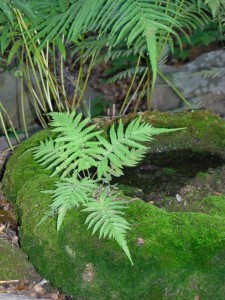
after reading the well written and researched “Green Gone Wrong – How our Economy is Undermining the Environmental Revolution” by Heather Rogers, I re-read the book
Natural Capitalism: The Next Industrial Revolution
by Paul Hawken, Amory B. Lovins, and L. Hunter Lovins (Nov 1, 2000- ISBN 0-316-35316-7)
the short answer to the question “what is natural capitalism?”: a way of thinking that seeks to apply market principles to all sources of material value, most importantly natural resources.
the authors have two related goals: first, to show the vast array of ecologically smart options available to businesses; second, to argue that it is possible for society and industry to adopt them.
they call their approach natural capitalism because it’s based on the principle that business can be good for the environment.
below are some direct quotes from the book, which I highly recommend reading, the more prominent and looming the uncertainty of survival of living forms and systems become.
quote
Climate
From space, the earth is blue because it is covered mainly by water. However, where it not for certain trace gases in the atmosphere, the earth would be a frigid icy white, and life as we know it would not exist.
Our dependable local star radiates energy in all directions, a bit of which falls on our own planet. As it turns and wobbles and wanders through an unimaginably chilly universe, the earth soaks in solar warmth. Billions of years of this cosmic rotisserie nurtured an enormous diversity of living forms and processes that, through photosynthesis and respiration, helped create an atmosphere. It is that band of gases that keeps life as we know it pleasantly warm.
The earth’s atmosphere seems vast to a person sheltered beneath it, but astronauts and cosmonauts see how tissue-thin it is against the black vastness of space.
Conservationist Jacques Cousteau and David Brower give us this helpful perspective:
“If the earth were the size of an egg, then all the water on the planet would be just a drop, all the air, if condensed to the density of water, would be a droplet only one-fortieth as big; all the arable land would be a not-quiet-visible speck of dust.
That drop, droplet, and speck are all that make the earth different from the moon.”
Natural capital
Natural capital comes about not by singular miracles but as the product of yeoman work carried out by thousands upon thousands of species in complex interactions. While scientists can identify the organisms that provide such things as food, pharmaceuticals, spices or fiber, no one fully understands their roles in the health of the ecosystem.
The best example of this is the most complex ecosystem on earth – soil.
Soil fertility is maintained by conversion processes carried out buy an extremely large number of organisms, some of which are poorly understood and some of which are unknown. Fertilizers notwithstanding, nutrient flows cannot be maintained without these processes.
Stanford University biologist Gretchen Daily calls the profusion of lie forms in the soil “staggering” – one teaspoon of good grassland soil may contain 5 billion bacteria, 20 million fungi, and 1 million protoctists.
Expand the census to a square meter and you will find, besides unthinkable numbers of the creatures already mentioned, perhaps 1”000 each of ants, spiders, wood lice, beetles and their larvae, and fly larvae, 2”000 each of earth worms and large myriapods (millipedes and centipedes) 8”000 slugs and snails, 20’000 pot worms, 40’000 springtails, 120’000 mites, and 12 million nematodes.
These life forms below ground weigh more than those above ground – the equivalent of a dozen horses per acre.
Besides providing fertility, the soil stores water, holding rain and runoff for later release, feeding streams while preventing flooding.
The fine particles in a pound of clay-rich soil contain about 100 acres of surface area on which to host biological and physiochemical interactions including buffering acidity from rain.
Soils decompose waste and remove litter, transforming animal, plant, and many types of human waste to nutrients and growing mediums.
Soils cleanse and filter pathogens and toxins. Antibiotics were discovered in soil.
Soil and soil organisms play an integral role in the cycling of nitrogen, carbon, and sulfur – the grand cycles that affect every aspect of climate.
The ultimate loop-closers, the basis of planetary metabolism, are the soil microorganism that turn back into nutrient flows everything that falls on or grows within the ground.
In Evan Eisenberg’s metaphor:
“The soil is less a factory than a souk, a casbah, a flea market, an economic free-for-all in which each buyer and seller pursues his or her own interest, and in which every scrap of merchandise – second-hand, seventh-hand, busted, salvaged, patched – is mined for its last ounce of value. Decay is good business because there are nutrients to be extracted and energy to be gained from the breaking of chemical bonds, if the net effect of the activity of the soil biota is overwhelmingly helpful – in fact, vital – to life on street level, it is not because nature has ordained it so, but because the various forms of life above and below ground have coevolved. “
Science can’t understand how plants grow until it understands the ecology of what they grow from. As Donald Worster put it: “we can no more manufacture a soil with a tank of chemicals than we can invent a rain forest or produce a single bird.”
And understanding soil, the ultimate natural capital (the Chinese call it the mother of all things) is in turn the key to turning agriculture from part of the climate problem into part of the solution.
Soil loss – especially the physical loss or biological impoverishment, hence carbon depletion, of humus – is currently far outpacing soil and humus formation and enrichment worldwide.
The interaction between plants and animals, in conjunction with natural rhythms of weather, water, and tides, provides the basis for the cycle of life, a cycle that is ancient, complex, and highly interconnected. When one of its components – say, the carbon cycle – is disrupted, it in turn affects oceans, soils, rainfall, heat, wind, disease.
Today, every part of the earth is influenced by human activity, and the consequences are unknowable.
Since it may not be possible to determine precisely which species are needed to maintain soil or other living systems, there is not way to state with any confidence which organisms we can do without (if any).
Natural capital can be viewed as the sum total of the ecological systems that support life, different from human-made capital in that natural capital cannot be produced by human activity. It is easy to overlook because it is the pond in which we swim, and, like fish, we are not aware we’re in the water.
Only when the services provided by ecosystem functions are unmistakably disrupted do we step back and reconsider.
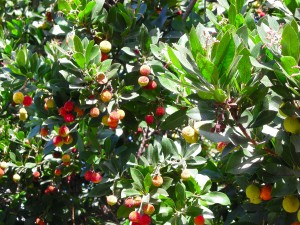
Environment as source of quality
Science provides a necessary basis for business to comprehend the emerging economics of living systems and ecosystem services.
In scientific terms, there is no phenomenon called production, only transformation.
No matter how energy or resources are used, scattered, or dispersed, their sum remains essentially the same, as dictated by the law of conservation of matter and energy.
This law is more than passing interest because it means that the term “consumption” is the abstract figment of economist’s imagination – that it is physically impossible in all processes or transformations.
What is consumed from the environment is not matter or energy but order or quality – the structure, concentration, or purity of matter. This is a critically important concept, because it is “quality” that business draws upon to create economic value.
Instead of focusing on whether physical resources will run out, it is more useful to be concerned about the specific aspects of the quality that natural capital produces: clean water and air, healthy soil, food, animals, forests, pollination, oceans, rivers; available and affordable sources of energy, and more.
If industry removes concentrated and structured matter from the system faster than it can be replaced, and at the same time destroys the means of its creation, namely ecosystems and habitats, it introduces a fundamental problem in production.
Humankind has a long history of destroying its environments, especially soil and forest cover.
In the face of this relentless loss of living systems, fractious political conflicts over laws, regulations, and business economics appear petty and small. It is not that these issues are unimportant but that they ignore the larger context.
Are we or are we not systematically reducing life and the capacity to re-create order on earth?
This is the level on which our discourse should take place, for it is there that a framework for both understanding and action can be formulated. In spite of what such signals as the GDP or the Dow Jones indicate, it is ultimately the capacity of the photosynthetic world and its nutrient flows that determine the quality and the quantity of life on earth.
Industry makes things.
It takes material – generally out of the ground – and processes them into desired forms.
These objects are distributed, sold, used, discarded, and then typically dumped back in or onto the ground.
Because economic consumption doesn’t create or destroy matter but only changes its location, form, and value, the same tonnages that were mined from the ground as resources, treated, transported, made into goods, and distributed to customers are then hauled away again as waste or emitted as pollution.
It its not the supplies of oil or copper that are beginning to limit our development but life itself. Today, our continuing progress is restricted not by the number of fishing boats but the decreasing numbers of fish, not by the power of pumps but by the depletion of aquifers, not by the number of chainsaws but the disappearance of primary forests.
While living systems are the source of such desired materials as wood, fish, or food, of utmost importance are the services that they offer, services that are far more critical to human prosperity than are nonrenewable resources.
A forest provides not only the resources of wood but also the services of water storage and flood management. A healthy environment automatically supplies not only clean air and water, rainfall, ocean productivity, fertile soil, and watershed resilience but also such less-appreciated functions as waste processing (both natural and industrial), buffering against the extremes of weather, and regeneration of atmosphere.
Humankind has inherited a 3.8 billion year store of natural capital.
As present rates of use and degradation, there will be little left by the end of the next century. This is not only a matter of aesthetics and morality, it is of the utmost practical concerns to society and all people.
Despite reams of press about the state of the environment and rafts of laws attempting to prevent further loss, the stock of natural capital is plummeting and the vital life-giving services that flow from it are critical to our prosperity.
Natural capital recognizes the critical interdependency between the production and use of human-made capital and the maintenance and supply of natural capital.
unquote
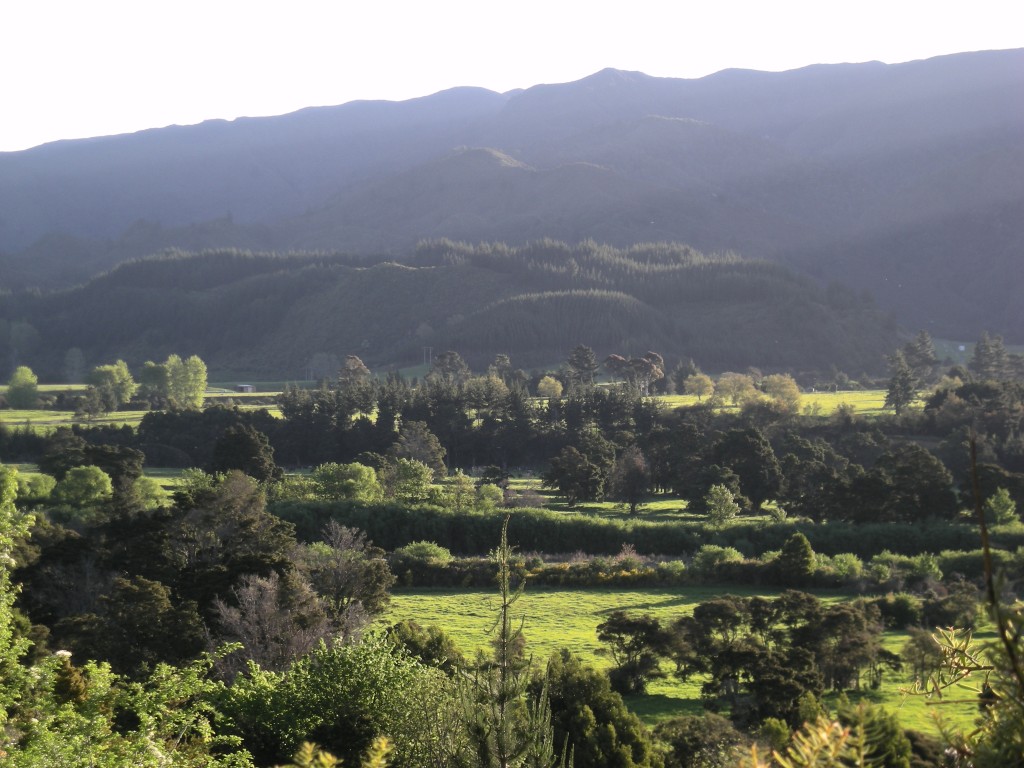
we measure everything by output, disregarding input -but their interdependence is LIFE itself.
Posted in diversicum
Leave a comment
Merry Christmas
Posted in diversicum
Leave a comment

